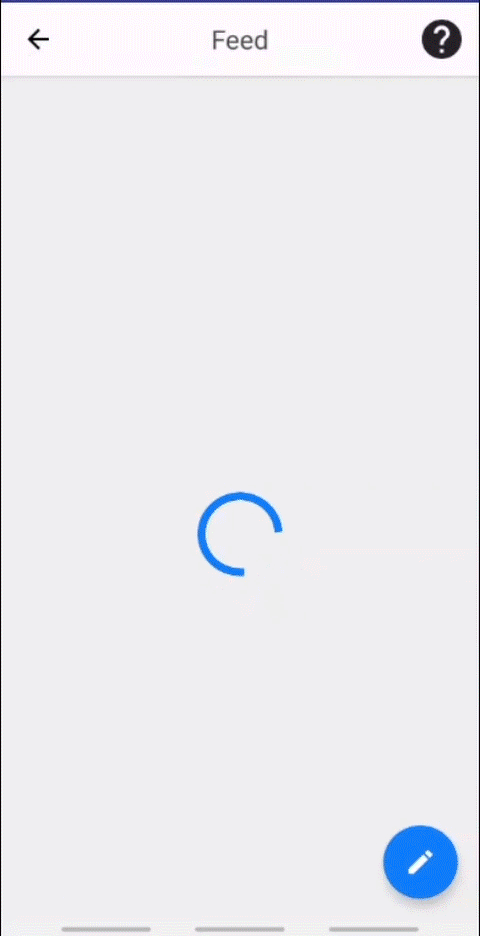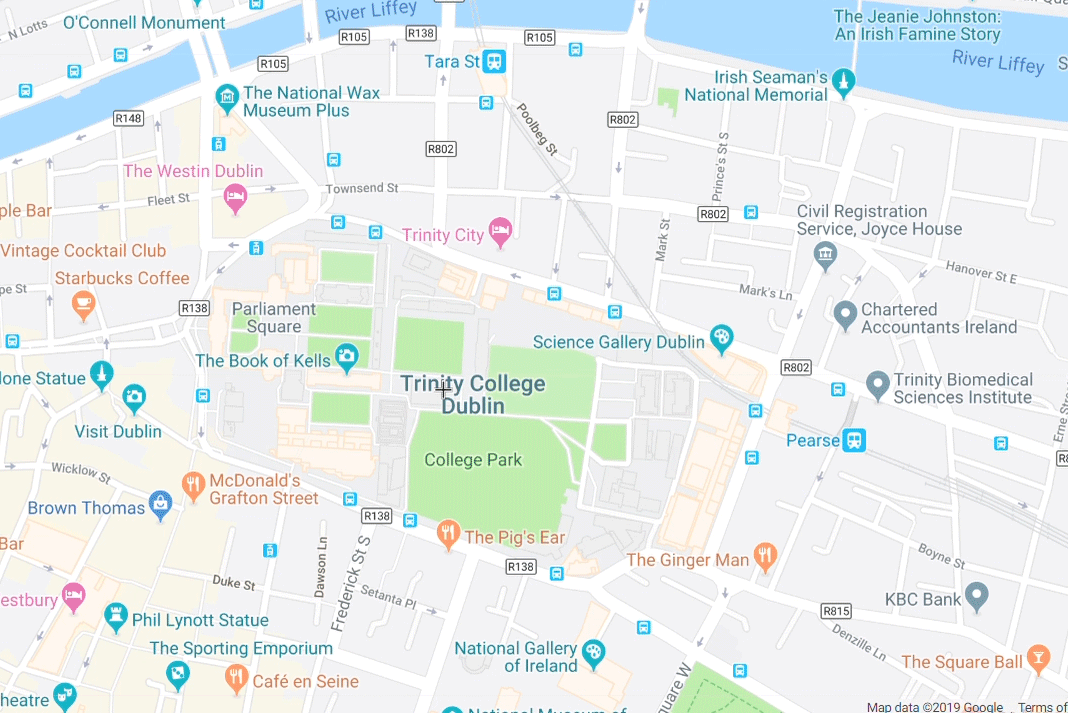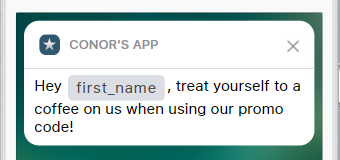Over the course of an average weekend out and about, I use my phone to check half a dozen social media sites I’m on, two dozen games from the sports I follow and watch a show while waiting for or travelling on various forms of public transport. A few years ago I couldn’t do any of this, but thanks to the prevalence of mobile-first apps I can binge watch Anthony Bourdain on my way home from work, check my two digit bank balance and help organize a night out I can’t afford, all on my phone! This sort of usage is the rule, rather than the exception, with people spending nearly 5 and a half hours using phones every day.
But what keeps people coming back to these apps?
The world’s most popular apps use every opportunity they can to grab the user’s attention through the deep utility and mobile first experiences that they provide. The good news is that the strategies that these successful apps use to provide utility and engage their users are available for all apps. Everyday, apps around the world use Pulsate to provide a comparable mobile first experience for their app users.
The apps in this article are some of the best at what they do – they’re on top of the bestsellers chart and keep their users engaged. Every one of them has a simple feature that they use to boost the app engagement rate.
Spoiler Alert: Each of these strategies can be quickly and seamlessly emulated at scale using Pulsate’s suite of growth tools.
Instagram: Dynamic Feed
Instagram have honed in on a minimalist look and their feed reflects that, it’s extremely simple for users to interact with posts. Liking, viewing extended descriptions and commenting can all be done through one tap, meaning the users can stay on the feed for longer and engage with more posts in a shorter period of time.
There was some controversy when Instagram changed the order that posts were viewed from a chronological order to a feed that is designed to show the user “the posts they want to see”. This update resulted in users seeing posts out of order and having to deal with liking a post that could be two days old – a social faux pas in this digital age! However, it also allowed Instragram to provide each user with a personalized feed that is unique to them.
A feed with content unique to each user is how all social media operates – no two Instagram content feeds are the same, so why should your app be different? Pulsate’s dynamic feed can be updated with cards specific to different audience segments, resulting in a feed that’s uniquely tailored for each user. It’s also extremely easy to interact with the Pulsate feed since the content appears in sequential order and contains one-click reply options that can lead to an in-app chat.

Cats, music and movies, the perfect combo!
PL App: Useful Push Notifications
The Premier League (PL) App is the English Premier League’s official app and is a must have for soccer fans on the go. The app provides updates from games and teams within the league and with over 5 million active users, it has a global audience.
If your app is trying to deliver notifications to hundreds of thousands of rabid fans, the delivery has to be timely and accurate. The PL app nails both of these criteria and your app can too. If desired, the PL app can notify you about all 20 teams including in-game events such as lineups, penalties, yellow and red cards as well as major events like goals. All of these notifications can be useful, they can have an impact on the user’s Fantasy Team as players in their team lose or gain points depending on what happens.

Clearly an Arsenal megafan here
Adding Fantasy Football specific notifications, which includes selection deadlines, bonus points being awarded and match previews, creates a very segmented user base to be notified. However, it does result in drawing all the users into one common goal of interacting with their team – whether it be 2 minutes making a change or half an hour agonising over who to transfer out.
Having a massive amount of options for push notifications in this case works out, as each selection can be opted in and out from very easily and more importantly, it provides value to the user. Like the PL app, Pulsate’s notifications can be sent at scale based on user segmentation but that’s not all: notifications can include personalized content like names or age, on top of rich media features and deeplinks. Pulsate’s notifications can also be triggered by a variety of differing circumstances, such as when the user enters a location or hasn’t used the app for a certain amount of time, all of which are designed to provide value for the user and result in higher conversions.
Uber: Easy To Access In-app Chat
In 2017, Uber launched an in-app chat service to let drivers and riders communicate with each other. The user can specify their location to the driver or ask questions while the driver can acknowledge the messages with one tap to minimize distractions behind the wheel. Uber’s chat allows both sides of the ride to access it easily, rather than the user having to leave the app to contact the driver and vice versa.
Similarly, Pulsate’s in-app chat makes it as easy as possible for brands and their customers to communicate with each other and solve problems quickly before they turn into a bigger issue that may result in a negative app store review. Pulsate chat messages can also be sent to the user proactively – whether they enter a geofence or they experience an issue within the app. One telecommunications customer automated Pulsate’s in-app chat to activate when user calls were dropped multiple times. This proactive prompt resulted a huge increase in the amount of users who had a positive experience within the app and a similar reduction in the amount of support calls that were received.

This is the fastest I’ve seen customer support ever respond
Snapchat: Driving Footfall with Geolocation
Snapchat’s location functionality is used for two major features – Snap Map and geofilters. Snap Map is a world map that lets you show your friends your location and view publicly shared content around the globe, all on a world map.
Snapchat also utilizes location for geofilters, which are location based photo filters. The filter location can be as accurate as a building or as large as a county. Users are encouraged to submit their own geofilter designs to be featured in their hometown or pay for a geofilter to be featured in a certain area – a favorite of 21st birthday parties!

Pulsate’s geofence technology in action
Snapchat’s filters are also time based, so a soccer game that has a filter showing the score can be updated throughout the game and is then unavailable after the match. These kind of filters can only be activated in a certain location, encouraging their use due to their exclusivity. Snapchat uses this geo technology to encourage more users to visit specific locations and to increase the amount of users who take specific actions within those locations. Sound familiar?
Pulsate’s location platform increases footfall to physical locations around the world. Geofences and beacons allow for content to be triggered when users are in the geofence and this is typically combined with granular segmentation to provide personalized notifications for each user encouraging them to take action within the geofence or to visit nearby stores or restaurants etc. When they visit those locations, Pulsate’s beacon technology takes over providing micro level personalized offers and content that encourages users to make a transaction within the physical store or location.
Netflix: Personalized Recommendations
Netflix has a lifetime’s worth of content on their platform and with it changing from month to month, their problem is where do users go after finishing a series? Netflix steps in and provides personalized recommendations based on previous viewing history and interests. Just finished The Umbrella Academy? Here’s a series based on another graphic novel and more Netflix created shows and movies starring Ellen Page.
It’s not just the recommendations that are personalized, all content in the user’s home feed is tailored for that individual user – thumbnails, the categories that appear and marketing are all determined based on past user behavior. It works too, with over 80% of what people watch coming from Netflix’s recommendations. As you watch more content, it feeds back into Netflix, the algorithm gets smarter and your recommendations become increasingly accurate.
The mission statement of Pulsate is to provide the same level of granular segmentation for apps. We allow apps owners and marketers to analyze user behavior and interests at scale and distill that data into useful insights that can be used to drive higher engagement and conversions at every stage of the customer journey. Pulsate provides the building blocks to begin understanding every interaction that a customer has with an app and to allow marketers to leverage that data to drive real results.

And now I want to buy yellow shoes…
Airbnb: Increase Lifetime Value
Airbnb uses a combination of all of the strategies we have mentioned to increase app engagement and lifetime value before, during and after the user’s visit to a new city. They leverage location, personalized content and an in-app chat to help inform the user about the place they are going to. When a user is booking a place through the app, they can chat to the landlord through an in-app chat, rather than having to call, email them or use a separate messaging service. Once the booking is confirmed, Airbnb begins to recommend activities, restaurants and bars. If you book a place in a massive city like New York, rather than sending information about a highly rated restaurant on the other side of the city, they recommend restaurant and events nearby to where you are staying.
The country the user is browsing from also comes into play, with different tourists preferring different activities – Americans prefer food and drink events while Japanese tourists prefer hands on activities. Airbnb also personalize events based on the user’s behavior – if you are looking at events that start in the evening, you’ll receive more recommendations for other evening activities. Airbnb used these features to increase bookings by 7.9% at first, and then a further 5.1% on top of that. They also invest heavily in the after trip experience by asking users to review where they stayed and using this data to help other users decide where to book.
By combining the features other apps use to retain their users, Airbnb are able to provide significant utility for their users and increase the amount of services and activities that are booked through their app. The great news is that any app can emulate Airbnb and all of the other apps in this article. Personalized recommendations, leveraging location data and using in app chat for surveys, reminders and proactive messaging all help to provide a compelling mobile experience for users and increase the amount of in app transactions.
All of the strategies in this article are used to engage users, drive growth and increase revenue for some of the world’s biggest companies. Why couldn’t you do the same? Pulsate’s growth platform allow any app to emulate the strategies used by mobile first brands and achieve growth in just two weeks. Each of these companies are world class at what they do but the tools they use are at the tip of your fingers, all you need to do is book a demo to see how Pulsate can help you achieve similar results.






HAVE YOUR SAY. LEAVE A COMMENT